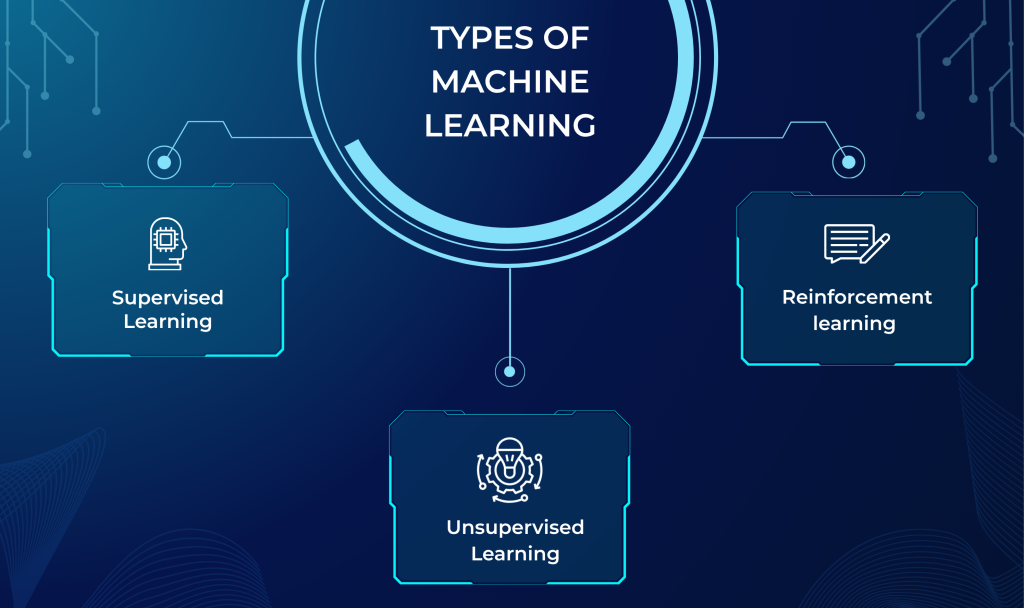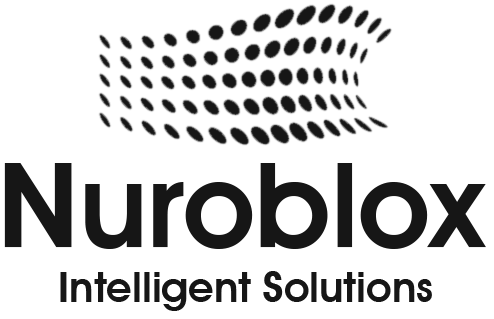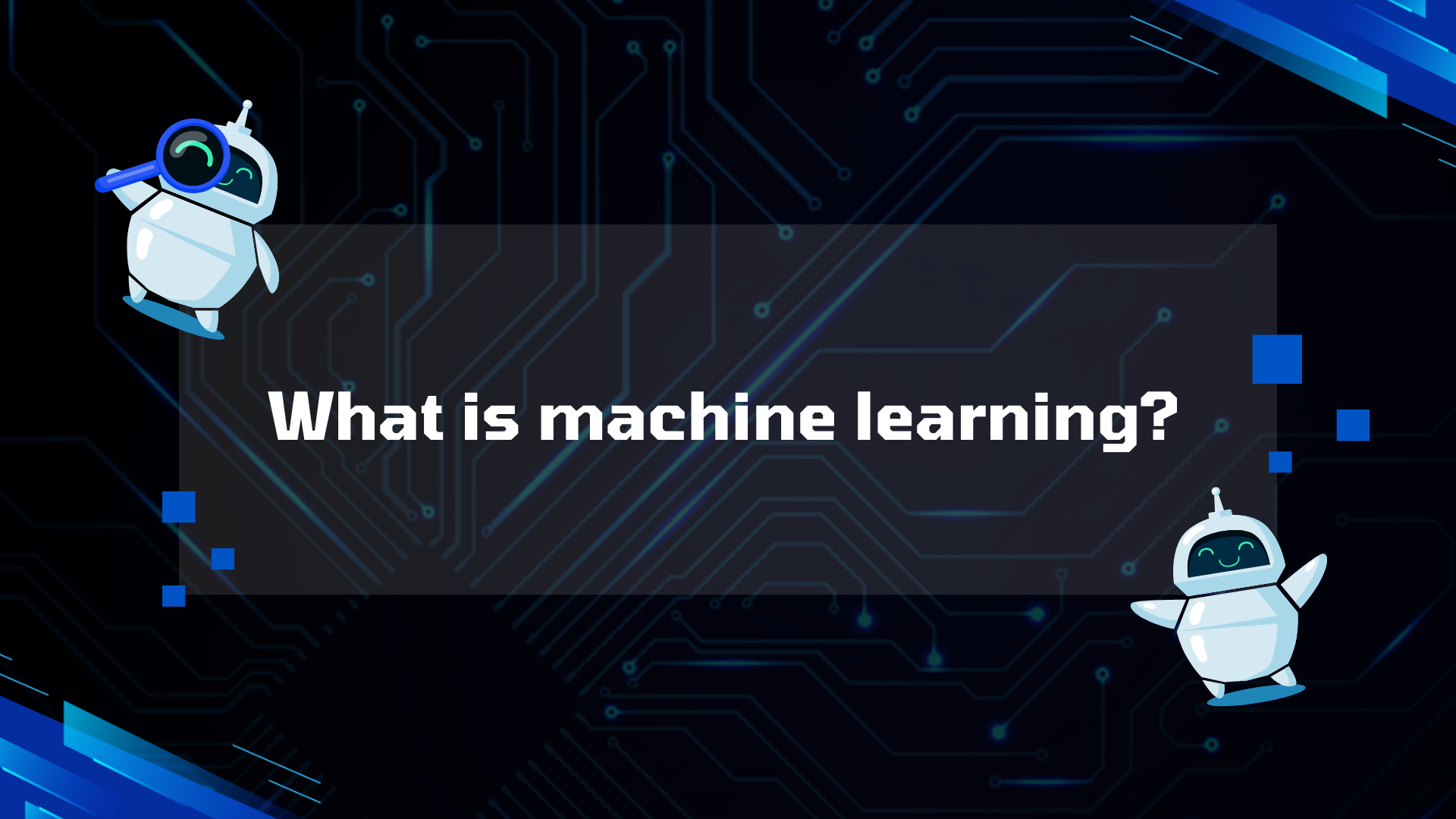What is machine learning?
Machine learning (ML) is a subset of artificial intelligence (AI) that enables computer systems to learn from data and make decisions or predictions without being explicitly programmed for every specific task. Unlike traditional rule-based programming, machine learning algorithms identify patterns in training data and apply those learned patterns to make accurate inferences about new, unseen data.
At its core, machine learning transforms how businesses approach automation by enabling systems to adapt, improve, and make intelligent decisions over time. This learning capability makes ML the backbone of modern AI systems, from predictive analytics tools to autonomous vehicles and intelligent process automation platforms.
The fundamental goal of machine learning is generalization-the ability to translate strong performance on training data into useful results in real-world scenarios. When a trained model is deployed to perform its intended task, this application is called AI inference.
How Machine Learning Works
Machine learning operates through mathematical logic and numerical data processing. The process involves several key steps that enable computers to learn patterns and make predictions.
Data Representation
Every piece of information in machine learning must be expressed numerically so it can be fed into mathematical algorithms. Data points are typically represented as vector embeddings, where each dimension corresponds to a specific feature’s numerical value. For inherently numerical data like financial information or coordinates, this conversion is straightforward. However, for text, images, or behavioral data, feature engineering is required to transform the information into ML-ready formats.
Feature Engineering
Feature engineering is the broader discipline of preprocessing raw data for machine learning use. This includes –
- Feature selection – Choosing which aspects of data to use in ML algorithms.
- Feature extraction – Refining data to only its most relevant dimensions
- Data preprocessing – Cleaning and preparing raw data for training
Deep learning models automate much of this feature engineering process, making them more scalable but less interpretable than traditional machine learning approaches.
Model Training and Optimization
The training process involves finding optimal values for model parameters – the adjustable values that determine how the algorithm weighs different variables. Consider a simple example predicting home prices based on square footage, number of rooms, and age. The algorithm adjusts parameters through training to minimize errors and produce the most accurate predictions possible.
Machine learning systems process data in real-time, learn from patterns, and continuously improve performance. This dynamic capability allows businesses to handle complex workflows, adapt to changing conditions, and make smarter decisions in automation scenarios.
Types of Machine Learning
Machine learning methods are categorized into three distinct learning paradigms based on their training objectives and the type of data they use. Understanding these categories helps businesses select the right approach for their automation needs.

Supervised Learning
Supervised learning algorithms train models for tasks requiring accuracy, such as classification or regression. Supervised machine learning powers both state-of-the-art deep learning models and a wide array of traditional ML models still widely employed across industries.
- Regression models predict continuous values, such as price, duration, temperature, or size. Regression algorithms model the relationship between independent variables (features) and dependent variables (target outcomes) to forecast numerical outputs. Examples of traditional regression algorithms include linear regression, polynomial regression, and state space models.
- Classification models predict discrete values, such as the category or class a data point belongs to, a binary decision, or a specific action to be taken. Classification algorithms assign input data to predefined categories based on patterns learned during training. Examples of traditional classification algorithms include support vector machines (SVMs), Naïve Bayes, and logistic regression.
- Many supervised machine learning algorithms can be used for either regression or classification tasks. For instance, the output of what’s nominally a regression algorithm can subsequently be used to inform a classification prediction.
Common applications –
- Email spam detection – classifying emails as spam or legitimate
- Medical diagnosis – analyzing patient data and medical images to identify diseases
- Fraud detection – identifying unusual transaction patterns that indicate fraudulent activity
- Credit risk assessment – predicting loan default probability
- Stock price prediction – forecasting market trends based on historical data
Variants –
- Self-supervised learning – Obtains ground truth directly from unlabeled data, such as training large language models to predict missing words in text
- Semi-supervised learning – Combines labeled and unlabeled data to improve model performance
Unsupervised Learning
Unsupervised learning discovers intrinsic patterns in unlabeled data without explicit guidance or predetermined outcomes. These algorithms identify similarities, correlations, or potential groupings that may not be apparent to human observers.
Most unsupervised learning methods perform one of the following key functions –
- Clustering – Clustering algorithms group unlabeled data points into clusters based on similarity or distance measures. This helps uncover hidden patterns or natural groupings within data. Common applications include customer segmentation, anomaly detection, and image categorization.
Popular clustering algorithms – K-Means, Gaussian Mixture Models (GMM), Hierarchical Clustering, and Density-Based Spatial Clustering of Applications with Noise (DBSCAN). - Association – Association algorithms identify relationships or co-occurrence patterns between variables in large datasets. They are often used to discover dependencies or correlations—such as which items are frequently bought together.
Common applications – Market basket analysis, recommendation systems, and web usage mining.
Example – Online retailers like Amazon or streaming services like Netflix use association models to recommend products or content based on user behavior. - Dimensionality Reduction – Dimensionality reduction algorithms simplify high-dimensional data by transforming it into a lower-dimensional representation that retains important structure and variance. This process enhances computational efficiency, helps reduce noise, and enables effective visualization.
Prominent algorithms – Principal Component Analysis (PCA), Autoencoders, t-Distributed Stochastic Neighbor Embedding (t-SNE), and Uniform Manifold Approximation and Projection (UMAP).
Applications – machine learning models.
Common applications –
- Customer segmentation – grouping customers by purchasing behavior or preferences for targeted marketing
- Market basket analysis – discovering product associations in retail transactions
- Anomaly detection – identifying unusual patterns in network traffic or system behavior
- Document clustering – organizing large document collections by topic
- Image compression – reducing data size while preserving important features
The challenge with unsupervised learning lies in effective data preprocessing and properly tuning hyperparameters that influence the learning process.
Reinforcement learning (RL)
Reinforcement learning (RL) trains models through trial and error, enabling them to make sequential decisions by interacting with an environment. The agent receives rewards for beneficial actions and penalties for detrimental ones, learning to optimize its behavior to maximize cumulative rewards over time.
Common applications –
- Robotics control – teaching robots to walk, grasp objects, or navigate environments
- Game playing – developing strategies to maximize scores in complex games like chess or Go
- Autonomous vehicles – learning optimal driving decisions in dynamic traffic conditions
- Resource optimization – managing inventory, traffic control, or energy distribution
- Treatment protocol optimization – determining optimal medical treatment sequences
Reinforcement learning excels in scenarios where the solution space is large, open-ended, or difficult to define explicitly
Deep Learning
Deep learning represents the cutting edge of machine learning, employing artificial neural networks with many layers to process data. While neural networks were introduced early in ML history, they became dominant in the late 2000s and early 2010s, enabled by advancements in graphics processing units (GPUs).
How Neural Networks Work
Neural networks comprise interconnected layers of “neurons” or nodes, each performing its own mathematical operation called an activation function. The output of each node serves as input to nodes in the following layer, creating a cascading effect until the final output is produced.
Each connection between neurons has a unique weight – a multiplier that determines how much one neuron contributes to the next. These weights, along with bias terms added to activation functions, are the parameters optimized through machine learning. The backpropagation algorithm enables individual optimization of millions or billions of weights, allowing deep learning models to learn extremely complex patterns.
Neural networks are universal approximators, meaning theoretically, for any function, there exists a neural network configuration that can reproduce it. This distributed structure gives deep learning models remarkable power and versatility across diverse applications.
Advanced Neural Network Architectures
Several specialized neural network architectures have unlocked new capabilities –
Convolutional Neural Networks (CNNs) – Add convolutional layers that extract important features by applying weighted filters. Primarily used for computer vision and image data, CNNs excel at tasks like image classification, object detection, and facial recognition.
Recurrent Neural Networks (RNNs) – Designed for sequential data, RNNs process sequences of inputs by operating in a recurrent loop where each step’s output becomes input for the next step. This creates an internal “memory” that allows RNNs to understand context and order.
Transformer Models – Introduced in 2017, transformers revolutionized machine learning with their innovative attention mechanism. This allows models to selectively focus on the most relevant parts of input data at specific moments in a sequence. Transformers power modern large language models and most generative AI applications.
Mamba Models – A relatively new architecture based on state space models, introduced in 2023. Mamba has emerged as a potential rival to transformers, particularly for large language models, offering an alternative approach to prioritizing relevant information.
Deep learning requires substantial amounts of data and computational resources compared to traditional ML, but delivers unparalleled performance on complex tasks.
Machine Learning Use Cases
Machine learning applications span virtually every industry, transforming business operations and enabling intelligent automation. Here are the primary domains where ML drives significant value –
Computer Vision
Computer vision enables machines to “see” and interpret visual data. This subdomain includes -
- Medical imaging diagnostics – Analyzing X-rays, MRIs, and CT scans to detect diseases with high accuracy
- Facial recognition – Identifying individuals in security systems and photo organization
- Autonomous vehicles – Interpreting sensor data for safe navigation
- Quality control – Detecting product defects in manufacturing in real-time
- Optical character recognition (OCR) – Extracting text from documents and images
Natural Language Processing (NLP)
NLP encompasses diverse tasks involving text, speech, and language data –
- Chatbots and virtual assistants – Providing automated customer support and personalized recommendations
- Sentiment analysis – Gauging public opinion from social media posts and reviews
- Language translation – Converting text between languages automatically
- Speech recognition – Transcribing spoken words into text
- Text generation and summarization – Creating content and condensing information
Predictive Analytics and Forecasting
Time series models analyze historical data for pattern recognition and prediction –
- Market analysis – Predicting stock market performance and optimal trading moments
- Demand forecasting – Optimizing inventory levels to prevent stockouts or overstock
- Predictive maintenance – Detecting equipment failure signs before breakdowns occur
- Disease outbreak prediction – Forecasting disease spread and optimizing hospital resources
- Weather forecasting – Predicting climate patterns and extreme weather events
Machine learning’s ability to process vast amounts of data, identify patterns, and make intelligent decisions makes it indispensable for businesses seeking to automate complex processes and gain competitive advantages.
Machine Learning Operations (MLOps)
Machine learning operations (MLOps) is a discipline that brings together machine learning, DevOps, and data engineering to create a repeatable and efficient process for building, deploying, and maintaining machine learning models. It treats the machine learning lifecycle like an assembly line – automating data preparation, model training, deployment, and monitoring to ensure consistent performance and reliability. This approach helps organizations move from experimental models in research to production-ready systems that deliver real-world value.
A successful MLOps pipeline depends on high-quality data and rigorous experimentation. Careful curation, preprocessing, and feature engineering of training data, combined with deliberate model selection, are key steps to achieving strong performance. Additionally, post-training validation using benchmark datasets and relevant performance metrics ensures that a model generalizes well rather than overfitting to the training data. Automation in these stages helps maintain reproducibility and traceability across model versions.
Once deployed, continuous monitoring becomes critical to detect issues such as model drift, data quality degradation, or changes in inference latency. Over time, these factors can impact model accuracy and reliability. MLOps frameworks include mechanisms for automated alerts, retraining triggers, and robust model governance to manage compliance and maintain accountability. This continuous improvement cycle enables organizations to sustain high model performance and adapt quickly to new business or environmental conditions.
Machine learning libraries
Machine learning libraries are specialized software frameworks that provide pre-built tools, algorithms, and functions to simplify the development and deployment of machine learning models. These libraries help data scientists and engineers focus on solving problems rather than building models from scratch. They include ready-to-use components for tasks such as data preprocessing, model training, evaluation, and visualization, making it easier to experiment with different approaches efficiently.
Some of the most popular machine learning libraries include TensorFlow, PyTorch, Scikit-learn, and Keras. TensorFlow and PyTorch are widely used for deep learning applications, offering powerful tools for building and training neural networks. Scikit-learn, on the other hand, is a versatile library for classical machine learning algorithms like regression, classification, and clustering. Keras, which runs on top of TensorFlow, provides a high-level API that simplifies model creation and experimentation.
These libraries also integrate well with other tools in the machine learning ecosystem, such as data processing libraries like Pandas and NumPy, and visualization tools like Matplotlib and Seaborn. Together, they enable a complete workflow-from data collection and cleaning to model deployment and monitoring. As machine learning continues to evolve, these libraries play a vital role in accelerating innovation and making advanced AI technologies accessible to a wider range of developers and researchers.


